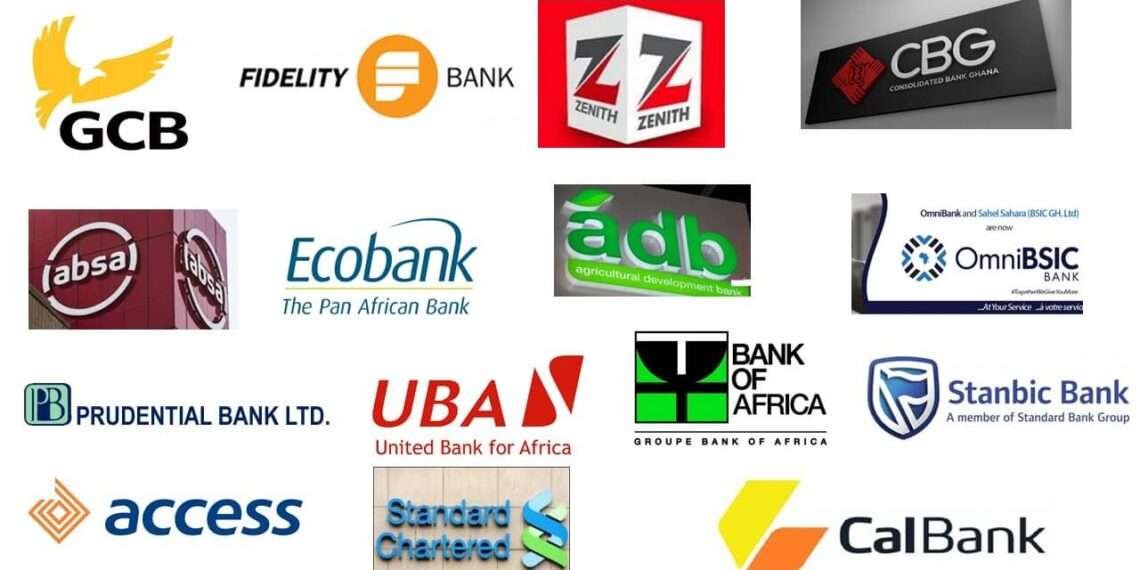Ghana’s banking sector continues to navigate the challenging aftermath of the Domestic Debt Exchange Programme (DDEP).
While there has been notable progress in restoring capital buffers, a recent report reveals that approximately 22% of banks operating in the country remain below the regulatory Capital Adequacy Ratio (CAR) threshold of 13.0%.
This shortfall highlights the ongoing need for strategic measures to ensure financial stability in the sector. According to IC Insights, these banks must adhere strictly to recapitalization plans, enforce robust credit risk management standards, and maintain consistent profitability to rebuild their capital positions.
Regulatory Relief Boosts CAR but Challenges Persist
The Monetary Policy Report for November 2024 painted a mixed picture of the sector’s recovery efforts. On one hand, the overall CAR (with regulatory relief) improved to 14.3% in October 2024, compared to 7.3% in the prior year. Without regulatory relief, however, the CAR stood at 11.1%, still below the mandatory threshold.
The regulatory relief measures, introduced to cushion the impact of the DDEP, have been instrumental in driving this recovery. Yet, the looming end of these reliefs in 2025 raises concerns about the sector’s ability to sustain these gains.
The Domestic Debt Exchange Programme significantly impacted the banking sector, with many institutions recording substantial losses in 2023. As a result, rebuilding capital buffers has been a top priority. The Bank of Ghana has supported this process through regulatory reliefs, but the onus is on individual banks to achieve full compliance by the end of the relief period.
IC Insights noted that disaggregated data showed a steady improvement in the sector’s solvency. The progress underscores the resilience of some banks and their proactive measures to shore up capital. However, the inability of 22% of banks to meet the CAR threshold highlights disparities in recovery efforts across the sector.
Rising Non-Performing Loans Add to the Woes
While efforts to restore capital buffers are yielding results, elevated credit risk remains a significant concern. The Non-Performing Loan (NPL) ratio rose to 22.7% in October 2024, up from 18.3% in the same period the previous year.
The rise in NPLs reflects the broader economic challenges that have impacted businesses and households. For banks, this means higher provisions for bad loans, which could further strain their capital positions.
To ensure the long-term stability of the banking sector, IC Insights recommends a comprehensive approach centered on bolstering capital buffers, managing credit risk, and sustaining profitability. Banks must stay committed to their recapitalization plans by raising additional capital, retaining earnings, or exploring strategic partnerships. These efforts are vital to restoring solvency levels and ensuring compliance with regulatory requirements.
Strengthening credit risk management is equally crucial, especially as the Non-Performing Loan (NPL) ratio continues to rise. Banks need to enhance their loan underwriting standards, closely monitor loan portfolios, and actively pursue recoveries to mitigate the adverse impact of bad loans on their capital positions.
Simultaneously, sustained profitability will play a critical role in rebuilding capital. To achieve this, banks must focus on operational efficiency, diversify their income streams, and adopt technological innovations to enhance service delivery and competitiveness.
The role of regulatory support remains pivotal as the final year of regulatory relief approaches. The Bank of Ghana must ensure a seamless transition from relief measures while continuing to provide guidance and oversight to strengthen the sector’s stability. With a concerted effort from all stakeholders, the banking industry can navigate its current challenges and lay a solid foundation for sustainable growth.
Optimism for the Future* Despite the challenges, there is optimism about the sector’s recovery trajectory. The improvement in CAR from 7.3% to 14.3% (with reliefs) within a year demonstrates the sector’s potential for resilience and growth.
IC Insights expressed hope for continued progress as Ghana heads into 2025. “The banking sector is making good progress on capital restoration as we head into the final year of regulatory relief,” the report noted.
The progress made in restoring capital adequacy in Ghana’s banking sector is commendable, but significant challenges remain. As 22% of banks struggle to meet the 13.0% CAR threshold, the sector must prioritize strategic interventions to address capital shortfalls and manage credit risks.
The final year of regulatory relief offers a critical window for banks to achieve compliance and strengthen their foundations for sustainable growth. With the right measures and support, Ghana’s banking sector can emerge stronger, more resilient, and better equipped to support the nation’s economic aspirations.



















